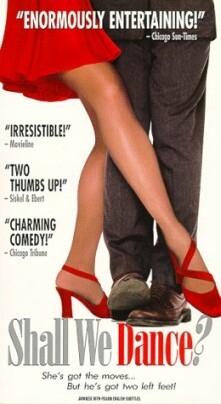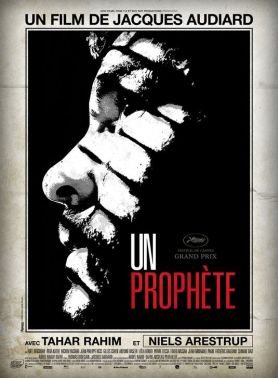Flags of our Fathers
Clint Eastwood’s Flags of our Fathers is the bigger and more expensive side of a cinematic diptych, the other half of which is a movie in Japanese, to be released next year, called Letters from Iwo Jima. It tells the story of General Tadamichi Kuribayashi, the Japanese defender of Iwo Jima who knew his cause was doomed but who fought on bravely, tenaciously, skilfully and almost to the last man. Apparently, heroism of this classic type is OK for the Japanese, but it won’t do for us Americans. We only want the victim-hero who has lately become the stock-in-trade of the Hollywood war movie, and it is that familiar figure which makes Flags of our Fathers a bore. True, the scenes of combat are often gripping, but there are far too few of them. And they are impossible to make any sense of — even as much sense as the men themselves must have been able to make of their situation. Most of the film consists of scenes set in stateside America in the spring of 1945 as three victim-heroes of the flag-raising on Iwo Jima go on a war bond tour.
The number of things wrong with this concept are too many to count. The three men — two Marines, Rene Gagnon (Jesse Bradford) and Ira Hayes (Adam Beach) and a Navy corpsman, John “Doc” Bradley (Ryan Phillippe) — are engaging enough characters, but we see too little of them that’s not involved with the emotional after-effects of combat. In effect, they become their neuroses. Their disillusionment with being fêted as heroes naturally goes hand in hand with what we learned well after 1945 to call Post-Traumatic Stress Disorder, as both produce picturesque, pity-inducing suffering. The trouble is that we’ve seen it so often before. Traumatized soldiers who shed their boyish illusions of honor and glory and heroism are now even more routine in the movies than those illusions themselves were in the patriotic pictures of the 1940s. We get it, all right? The American movie audience lost its innocence so long ago it doesn’t even remember what innocence was like anymore. You might almost start to wonder if it ever existed in the first place.
Even in its set-up, the war-bond tour is bogus. We are asked to believe that the country is on the brink of bankruptcy and in danger of being unable to go on with the war unless the bond tour raises enough money, which is ridiculous. But Mr Eastwood and his screenwriters,William Broyles Jr. and Paul Haggis (adapting the book by James Bradley and Ron Powers), have to hype the tour because they are also hyping one of the movie’s central pseudo-profundities: that the fate of nations depends on a single photograph. The comparison that somebody makes in the movie is with the photograph during the Vietnam war of the South Vietnamese officer executing a Viet Cong prisoner. This was supposed to have turned the American public against the war and led to America’s eventual pull-out. Doubtless the media, of which the movie business may be considered to be an offshoot, would like to believe in their own importance to this extent, but neither this photograph nor the one of the flag-raising on Iwo Jima had anything like the importance that Flags of Our Fathers attributes to them.
Even more disastrous is the ponderous and heavy-handed moralizing Clint Eastwood has gone in for in his late directorial career, at least since Unforgiven (1992). In fact, the moralism of Flags is substantially the same as that of Unforgiven and boils down to the sort of “message” that Sam Goldwyn used to say ought to be left to Western Union: killing people, and watching people die, leaves a man permanently scarred. Yet Clint doesn’t mention that it’s not all down-side, since these scars also bring status. In particular, they admit the man to a freemasonry of grief and bitter experience that allows him to look down with a sort of pitying contempt on everyone who stands outside it. Of the civilians or stateside military men our three heroes encounter on their tour, only the parents of dead comrades are at all sympathetic. The rest are giggly or glad-handing ninnies. They Just Don’t Understand! Sob! And so our victim-heroes are further victimized by being isolated from society by their experiences. Politicians, of course, come in for a particular slating. Even President Harry S. Truman (David Patrick Kelly), a man who in real-life saw some pretty serious combat himself in World War I, is made to look like an idiot.
The summit of idiocy comes as the three men are made to climb a Mt Suribachi made of papier maché erected in the middle of Soldier Field, Chicago, and plant a flag on the top as a brass band plays patriotic marches, fireworks go off and thousands cheer. “That’s show-business,” says their handler, Bud Gerber (John Slattery), cheerfully. In the unlikely event you need to have it pointed out to you, this is supposed to be a very bad thing. Though he has been a director for 35 years and an actor for more than half a century, Mr Eastwood apparently believes that putting on a show is a shameful thing — at least if it is a show about heroism. Heroism, for him, means suffering, not triumph or glory. “Maybe there’s no such thing as heroes,” goes the other of the film’s two principal pseudo-profundities. Pishposh! There’s an idea nobody in Hollywood has ever thought of before!
No one would mind it too much if we had been allowed to take the moral or leave it alone. But Mr Eastwood apparently thinks we’re as dumb as Mr and Miss American Everyman of 1945 and need to be hit over the head with it again and again. Most clumsily, as the three heroes stand on top of their fake mountain in Chicago and watch the fireworks go off, the film fades to an Iwo Jima flashback: the mountain becomes the real mountain, the fireworks become real bombs and rocketry and the men become their former selves, terrified in the middle of a nightmare landscape. This happens not once but twice, and there are literally dozens of other cuts back and forth between fat and fatuous civvy street and the allegedly real world of death and destruction that the men have come from but have been unable to leave behind. Do you think these switchbacks are meant to tell us something?
If you’re anything like me, you will become dizzy and disoriented from so much needless shuttling between the two contrasting worlds. The effect is also hopelessly to compromise the narrative line that might otherwise have given context and meaning to the emotions of terror and grief on the battlefield and disgust and disillusionment back in the States. Just as you start to be engaged by the scenes of battle, you will find yourself back in the unfeeling civilian world, on a train speeding through the night with the supposititious heroes feeling sorry for themselves. Just as you’re getting interested — as interested as you can — get in their post-combat and post-war lives, you are whisked away again to witness some fresh battlefield horror which (count on it) is going to come back to haunt them in after-years. The representation of emotion may be what the movies are all about, but when it is emotion this detached from its non-emotional context it becomes merely wearying.
Lord knows, I don’t want to give the impression that I am ridiculing a movie that goes to such extraordinary lengths to show respect for those who have so bravely suffered and died. But I felt about it rather as I did about Saving Private Ryan, that perhaps there’s such a thing as being too respectful; perhaps showing too much respect for the suffering is not to show enough respect for the man. For if we suppose, as some of us still do, that these men suffered for something — to wit, their duty, their honor, their country — don’t these thing deserve just a little bit of respect as well? Duty and honor are never mentioned in Flags of our Fathers, and the country it shows us doesn’t deserve the sufferers’ sacrifices. If their suffering is all they’ve got to show for it, I call that demeaning, not respectful.
Discover more from James Bowman
Subscribe to get the latest posts to your email.







